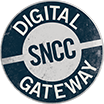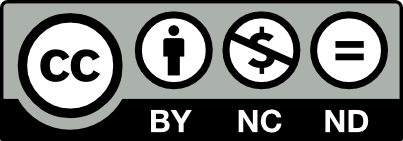Fall 1962
Terrorists burn churches in Southwest Georgia
A pre-dawn phone call on Sunday, September 9, 1962, awakened SNCC organizers and informed them that the Mt. Olive Baptist Church, the primary site for Terrell County’s mass meetings, was on fire. Prathia Hall and other SNCC activists dressed quickly and rushed to the church where no firefighters were on sight. With fear and shock, they watched the church burn to the ground. Members of the congregation and the community sobbed uncontrollably as they tried to console each other.

Older woman standing at Shiloh Baptist Church in Albany, Georgia, August 1962, Danny Lyon, Memories of the Southern Civil Rights Movement 28, dektol.wordpress.com
This violent incident was just one of many attempts made by white supremacists in an effort to maintain political and economic control of the region. Churches, as independent black institutions, were the most important community institution for the Freedom Movement. They were spaces that enabled SNCC members to conduct mass meetings and literacy classes with local people. SNCC itself sometimes held staff meetings in them. During these sometimes lengthy sessions, SNCC organizers debated, strategized, laughed, and cried, trying to articulate the issues they thought mattered most to disenfranchised Black people.
Following SNCC’s arrival in Southwest Georgia, as was often true across the Black Belt South, many Black congregations were apprehensive about housing SNCC members and publically identifying with ideas of freedom and equality. The risks, many felt, were too great. Church ministers were not usually completely independent, because in addition to their church responsibilities, they held jobs in the white community working as teachers, mill laborers, or held custodial jobs in town.
No one knew the risks better than Trim Porter a Sumter County resident and leader in SNCC’s Southwest Georgia voter registration drive. On December 7, 1962 an unidentified white man set fire to his home in retaliation for allowing SNCC members to hold meetings in his church after the Shady Grove Baptist Church–the former meeting place–was burned to the ground in August of the same year.
Mass meetings at churches were under constant surveillance. Police sometimes stood outside the churches, taking the names of people as they entered. In Sasser, Georgia, a tiny town in Terrell County, Sheriff Zeke Matthews and a dozen deputies stormed into the Mount Olive church during a mass meeting and went from pew to pew rubbing their pistols; they then stood scowling in the back. Reporting on this for the New York Times, Claude Sitton quoted Matthews as telling him, “We want our colored people to go on living like they have for the last hundred years.”

Woman and man in crowd at Shiloh Baptist Church in Albany, Georgia, August 1962, Danny Lyon, Memories of the Southern Civil Rights Movement 28, dektol.wordpress.com
It took all the “freedom-faith” that one could gather to open churches for movement classes and meetings, where activists and local people affirmed each other in the struggle. Movement leaders from SNCC and from the community clarified the issues, offering inspiration and giving strength and courage to movement troops. As SNCC field secretary Prathia Hall fondly recalled, “We all reaffirmed our commitment to the freedom struggle at mass meetings.”
After 1962, Southwest Georgia remained an active site for organizing efforts despite the large scale acts of violence movement members faced on a daily basis. SNCC activists continued to focus on voter registration projects and the economic empowerment of local people.
Sources
Taylor Branch, Parting the Waters: America in the King Years 1954-63 (New York: Simon 7 Schuster, 1989), 619.
Charles E. Cobb, Jr, On the Road to Freedom: A Guided Tour of the Civil Rights Trail (Chapel Hill, NC: Algonquin Books, 2008), 189.
Prathia Hall, “Freedom Faith,” Hands on the Freedom Plow: Personal Accounts by Women in SNCC, edited by Faith Holsaert, et al. (Urbana: University of Illinois Press, 2010). 178, 179.
Stephen G.N. Tuck, Beyond Atlanta: The Struggle for Racial Equality in Georgia, 1940-1980 (Athens: University of Georgia Press, 2003), 190.
“Voter Registration Leader in Sumpter County, GA. Left Homeless After Home Destroyed by Fire,” SNCC Press Release, December 7, 1962, Civil Rights Movement Veterans Website.
“Churches Burned, Nightriders Attack SNCC Staff in Southwest Georgia Voter Registration Drive,” The Student Voice, October 1962, Civil Rights Movement Veterans Website.




